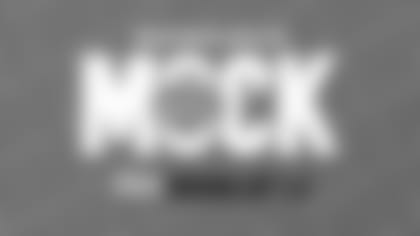Summary
The year was a highly significant one for the Bengals, in both a football and a civic sense. On the football side, the Bengals moved into the NFL as part of the league's merger with the AFL. Paul Brown's quest in returning to pro football, following his ouster from Cleveland by Art Modell in 1962, had always been about re-joining the NFL. So when the Bengals began play in the AFL in 1968, it was key for Brown to know that the '70 NFL-AFL merger was already approved. There was much debate and controversy over exactly how the leagues would combine. The Bengals pushed strongly for a full merger, with the 26 clubs divided into two 13-team conferences. Other interests sought to keep the 16 NFL teams and 10 AFL teams in separate conferences of unequal size. But the full merger view prevailed, with the NFL's Baltimore Colts, Cleveland Browns and Pittsburgh Steelers agreeing to join the 10 AFL teams in the new American Football Conference (AFC). The remaining 13 NFL teams formed the National Conference. The Bengals were part of a four-team AFC Central Division, joined by Cleveland, Pittsburgh and the AFL Houston Oilers. Thus was born the twice annual "Battle of Ohio" between the Bengals and Browns.
The Bengals started horribly on the field, losing six of their first seven games, but they roared to life in winning their last seven and claimed the first AFC Central title at 8-6, by a game over Cleveland. The Bengals became, at that time, the youngest franchise (third year of existence) to reach the NFL playoffs. Baltimore squelched the Bengals 17-0 in the first round of the playoffs, but that Colts club would go on to win Super Bowl V, and Brown won the Associated Press NFL Coach of the Year award.
On the civic side, 1970 was the debut season for Cincinnati's dual-sport downtown stadium, which would be the Bengals' home through 1999. It was announced on Jan. 9 that the facility was officially named "Cincinnati Riverfront Stadium," but in popular usage the name soon became just "Riverfront Stadium." Though seating capacity for football varied, due to whether the Reds' home baseball season was still on, the new stadium roughly doubled the capacity of Nippert Stadium. The Bengals first played at Riverfront on Aug. 8, defeating Washington in a preseason game. The first regular-season game was on Sept. 20, a 31-21 win over Oakland, with QB and future Bengals head coach Sam Wyche scoring the new facility's first regular-season football points, on a five-yard TD run in the first quarter. The club averaged 58,251 home attendance in the regular season. The baseball Reds had begun their tenure at Riverfront with a game vs. Atlanta on June 30.
Postseason Game Summary – AFC Divisional Playoff
In their first season in the NFL after two in the American Football League, the Bengals made a furious run to reach the playoffs, winning their last seven games after a 1-6 start and claiming the first AFC Central Division title. But the powerful Colts, who would go on to defeat Dallas in Super Bowl V, were too much for Cincinnati. Legendary Baltimore QB Johnny Unitas threw TD passes to WRs Roy Jefferson and Ed Hinton in the first and fourth quarters, and the Baltimore defense came through on a cold, windy day, limiting Cincinnati to 63 yards rushing and 76 passing. Colts rookie RB Norm Bulaich rushed for 116 yards on 25 carries. Jim O'Brien, the Colts kicker from the University of Cincinnati, kicked a 44-yard FG. O'Brien would wind up making the game-winning FG as time expired in Super Bowl V. Cincinnati's lone scoring attempt, a 50-yard FG try by K Horst Muhlmann, was blocked by LB Ray May.

League Rankings
| TOTAL | RUSH | PASS | |
|---|---|---|---|
| OFFENSE | 16 (280.5) | 4 (146.9) | 21 (133.6) |
| DEFENSE | 20 (298.4) | 9 (110.2) | 25 (188.2) |

Individual Leaders
| PLAYER | CATEGORY |
|---|---|
| Horst Muhlmann | Scoring |
| Virgil Carter | Passing |
| Jess Phillips | Rushing |
| Chip Myers | Receptions |
| Chip Myers | Receiving Yards |
| Dave Lewis | Punting |
| Lemar Parrish | Punt Return |
| Lemar Parrish | Kickoff Returns |
| Horst Muhlmann | Field Goals |
| Lemar Parrish | Interceptions |

Coaching Staff
| COACH | POSITION |
|---|---|
| Paul Brown | Head Coach |
| Vince Costello | Linebackers |
| Jack Donaldson | Offensive Backfield |
| Bill Johnson | Offensive Line |
| Chuck Studley | Defensive Line |
| Bill Walsh | Receivers |
| Chuck Weber | Defensive Coordinator/Defensive Backfield |

1970 NFL DRAFT: JAN 27 - 28
| ROUND | PLAYER | POSITION | COLLEGE | SELECTION NUMBER |
|---|---|---|---|---|
| 1 | Mike Reid | DT | Penn State | 7 |
| 2 | Ron Carpenter | DT | North Carolina State | 32 |
| 3 | Chip Bennett | LB | Abilene Christian | 60 |
| 4a | Joe Stephens | G | Jackson State | 85 |
| 4b | Billie Hayes (acquired from Kansas City in trade on 9-8-69) | DB | San Diego State | 104 |
| 5 | (sent to N.Y. Jets in trade on 7-28-68) | 110 | ||
| 6 | Sandy Durko | S | South California | 137 |
| 7 | Lemar Parrish | CB | Lincoln University (Mo.) | 163 |
| 8 | Bill Trout | DT | Miami (Fla.) | 188 |
| 9 | Bill Bolden | RB | UCLA | 216 |
| 10 | Nick Roman | LB | Ohio State | 241 |
| 11 | Sam Wallace | LB | Grambling | 266 |
| 12 | Tom Truesdell | DE | Ohio Wesleyan | 294 |
| 13 | Paul Dunn | RB | U.S. International | 319 |
| 14 | Joe Johnson | WR | Johnson C. Smith | 344 |
| 15 | Marvin Weeks | DB | Alcorn A&M | 372 |
| 16 | Larry Ely | LB | Iowa | 397 |
| 17 | Richard Lee Smith | RB | Washington | 422 |

Pro Bowl
Players selected for the 1970 NFL Pro Bowl: CB Lemar Parish, TE Bob Trumpy






